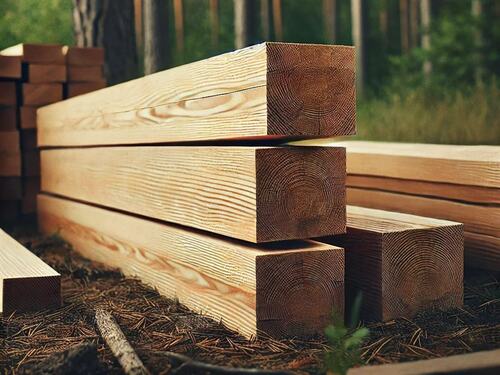Between Every Two Pines is a Doorway to a New World
Introduction
The title of this blog is a quote from John Muir , one of America’s most famous and influential naturalists. Muir had a way with words, capturing the beauty and significance of nature in his writings. Similarly, Arborist Now has a way with wood, especially with the versatile and historically rich pine.
The Many Faces of Pine

Norfolk Island Pine Trees Showcasing their Unique Growth Patterns
Did you know there are over one hundred species of pine? These species vary greatly in hardness, density, and usability. While pine is generally softer than hardwood, many species of pine compare favorably to hardwoods in terms of strength. Pine is one of the most economically important trees in North America, playing a crucial role in various industries, including furniture, lumber, turpentine, and pulp production.
Historical Significance of Pine
Pine has been utilized for centuries, with Native Americans using the sap to waterproof canoes and glue feathers to arrows. The inner bark was an ingredient for bread, and the seeds served as a food source. During the pre-Revolutionary period, eastern white pines from colonial New England were highly prized for shipbuilding, specifically for their use as single-stick masts. To maintain its naval and trading advantage, Britain passed laws to protect these white pines, which eventually led to the Pine Tree Riot —a significant precursor to the Boston Tea Party.
Pine in North America: Farmed vs. Naturally Grown
Pine species commonly used for lumber grow taller than any other cone species in North America. However, there is a significant difference between farmed and naturally grown pine. Farmed pines, grown in environments optimized for rapid growth, lack the strength of their naturally grown counterparts. Naturally grown pines, such as the Great Basin bristlecone pine, grow slowly over centuries, with some living for over five thousand years. These ancient trees are a testament to the enduring strength and beauty of naturally grown pine.
Reclaimed Pine: Breathing New Life into Old Wood

Long Pine Wood Cants in a Forest Setting
Pine is often reclaimed from historic structures, offering a sustainable way to utilize this valuable wood. Reclaimed pine can be found in various forms:
- Hand-Hewn Timbers: These timbers are identified by deep hewing marks or a clean hewn look, reflecting the process of shaping the wood. Due to pine’s softness, these marks are often more pronounced.
- Dimensional Lumber: Dimensional pine lumber is frequently reclaimed from the interior framing of historic structures, providing a rustic yet strong material for new projects.
- Barn Siding: Pine barn siding is highly popular due to its availability in long pieces and its varied colors, ranging from weathered gray to traditional red. It can be dried and milled for both internal and external uses.
- Flooring: Although less durable than hardwood, pine flooring is still valued for its unique appearance and historical significance.
Heart Pine: The Crown Jewel of Reclaimed Wood
The nonliving center of a tree trunk is known as “heartwood;” in pine trees, it is referred to as “heart pine.” Currently, heart pine is mostly obtained by reclaiming old lumber or recovering logs that fell or were felled before 1900.
Longleaf Pine: A Vanishing Resource
Longleaf pine, the source of much of the heart pine available on the market, was once abundant along the coastal plain from Virginia to eastern Texas. Due to extensive deforestation since the colonial period, only about 3 percent of the original longleaf pine forests remain today. Longleaf pine was the wood of choice for construction during the Industrial Revolution, prized for its natural resistance to mold, insects, and rot. However, this valuable resource is now incredibly rare, making reclaimed longleaf pine even more special.
Unique Qualities of Old-growth Pine

Old-growth Pine Logs with Visible Grain Patterns
Old-growth pine, with its heartwood often saturated with resin, is heavy, rot resistant, and highly flammable. This wood, reclaimed from historic structures or riverbeds, is prized for its durability and beauty. Choosing reclaimed wood from Arborist Now ensures that you’re using a sustainable, high-quality material for your special project.
Conclusion
Pine is more than just a tree—it’s a doorway to a new world, offering endless possibilities in woodworking and construction. Whether you’re seeking hand-hewn timbers, dimensional lumber, or the prized heart pine, Arborist Now provides the best source for reclaimed wood that carries history, strength, and beauty. Choose reclaimed pine for your next project and be a part of preserving a rich natural legacy.
Originally posted on December 5, 2020.


